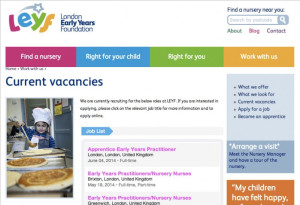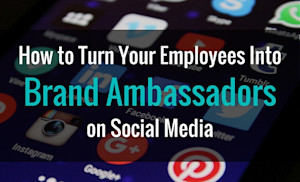
Caring is Sharing: Why Corporate Storytelling is Important
During the course I teach in Creative Writing at Utrecht University, I tell my students one thing when they’re considering the protagonists of their stories: make me care. For readers to want to become engaged with your story, they have to like your character – flaws and all.
I tell them that when I’m at a party and I’m talking to someone I don’t like, I politely find a way to excuse myself and exit stage left.
The same can be said of businesses: if I don’t like your business, I’m going to take mine elsewhere. If I don’t trust your business, I won’t engage with it. If I don’t care about the company I work for, I won’t be stimulated to go the extra mile for them. Which is why it’s important to focus on company branding, but more importantly on storytelling.
In AdWeek, Jon Hamm has recently argued that the two are not the same, encouraging businesses to focus on stories that require engagement, rather than the consumption of prescribed content.
Why tell a story?
Knowing what your business stands for and communicating that to your employees can help boost your Employee Referral Programmes or attract the talent you’re looking for. But most importantly, when people care about your brand, they’ll advertise it and want to be part of it.
It allows your employees and consumers to tell your story for you.
Also, studies by Melanie C. Green and Timothy C. Brock at Ohio State University have shown that people can be influenced more effectively through storytelling than through logical arguments.
Explore your company’s journey.
It’s vital that the message you wish to send out into the world as a company is clear. In stories, protagonists who don’t seem to go anywhere or who lack a clear identity are confusing, if not downright boring. So for your company to appeal to people, it needs to uncover its values to share a consistent story.
During my lectures on plot development I always refer to Aristotle, who has said that a man is his desire. And as much as this also holds true for a woman, it holds true for your company.
Ask yourself what you hope to accomplish through your business. If you know where you’re going, you can figure out how to get there.
How to include a story on social media and stimulate people to co-create?
Samara Parker has already pointed out three ways to share your employer brand story with Facebook.
Apart from discussing where you want to take your company, talk about your past and explain the motivation behind starting your business. Consider where you started and what choices you have made to get where you are.
Decisions define character.
When McDonald’s decided against using ‘pink slime’ in their burger recipe, they changed their company’s story.
Albeit a tad late…
Make the story bigger than yourself.
It’s always good to share your causes and show that your company is also about other people. But most importantly, let employees know that they are part of your story.
Tell your brand story through your employees.
Encourage participation.
Hamm states that “stories rely on the intended audience to develop their own imagery and detail to complete and, most importantly, to co-create (…). The truly great storytellers have long embraced the fact that the most powerful stories happen in the mind of the audience, making each and every story unique and personal for the individual.”
Nothing is more powerful than a story in which you can partake. Interactive narratives have always been appealing in the gaming industry and have already crossed over to television, with series allowing you to choose your own ending. The idea of having had an impact on a narrative is one of the most powerful tools in creating engagement.
Make your company’s story personal and interactive by showing how individual employees, even through hobbies and interests, represent and complement your corporate identity. It allows them to imagine how they as individuals could help expand the company narrative.
I always include on my CV that I’m a powerlifter, because apart from that it makes clear that I am one awesomely strong woman, it says I’m goal-oriented, focused, result-driven and can roll with the big guys. Sharing my personal interests and accomplishments as a powerlifter through your company’s social media would say that you employ rock solid staff, making you a rock solid company.
Embrace visual culture.
We live in a time in which the written word is losing territory to the image. One look at popular social media is proof of this: Instagram, YouTube, Pinterest, Vine, Snapchat, and of course Facebook exert a visual culture, and one that is moving away from image, and towards video.
ComScore reports that in October 2013 189 million viewers watched 49.1 billion content videos online in the United States alone.
On top of that, there’s a hierarchy in trusted communication. Napoleon has said that “a good sketch is better than a long speech,” and he was right.
Seeing is also believing, which is why video is often more powerful than the written word.
Take a look at Apple’s employee recruitment video as an example:
Whether you are using storytelling for recruitment purposes, corporate branding or marketing strategies, the story you tell should build trust, understanding and most of all create engagement.





